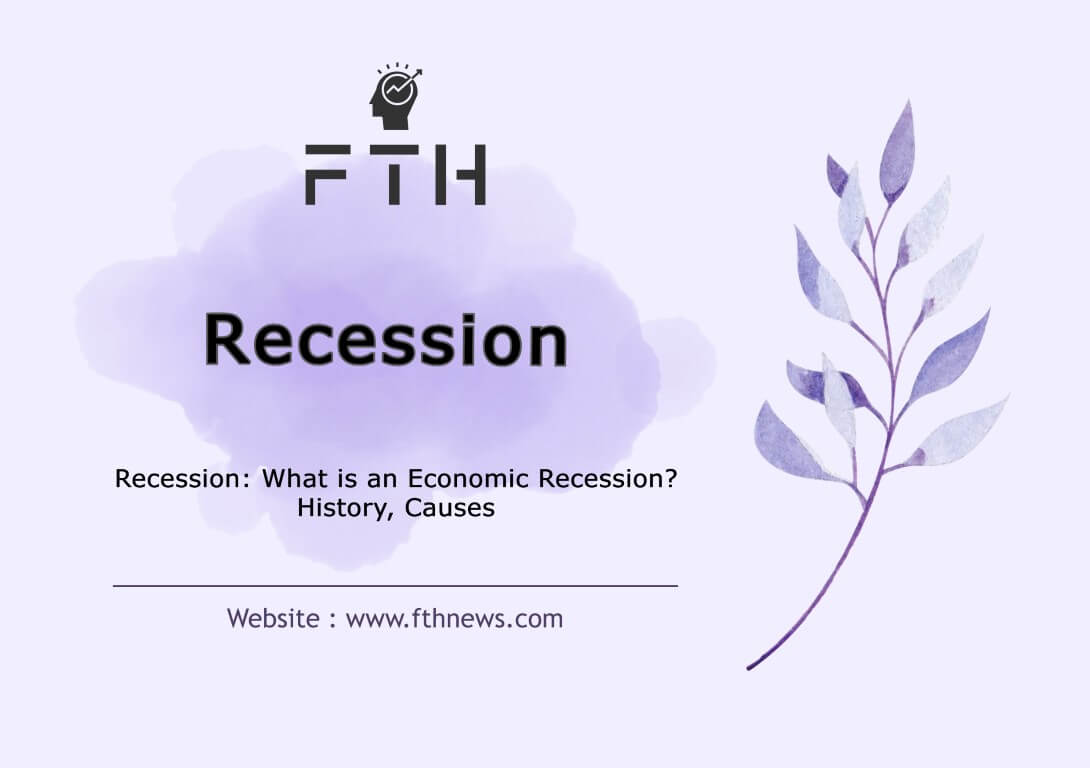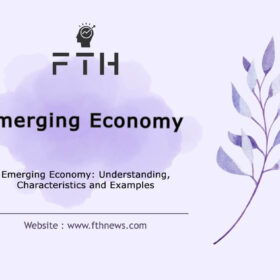
Recession: What is an Economic Recession? History, Causes, Examples, Protecting Your Capital
In this article, we’ll delve into the definition of economic recession .
We’ll explore the causes, signs, and historical occurrences of economic recessions, distinguishing between a mild economic slowdown and a full-blown recession.
We’ll also touch on policies designed to mitigate the impact of recession, strategies for individuals navigating economic downturns, and how an economic recession can influence the digital currency market.
What is an Economic Recession?
The World Bank, a prominent international financial institution, defines an economic recession as a significant and severe decline in economic activities that results in a substantial reduction in gross domestic product (GDP), employment, production, and, ultimately, economic growth.
This official definition is widely accepted by institutions like the International Monetary Fund and serves as a crucial benchmark for identifying economic recessions.
In simpler terms, an economic recession entails a prolonged period of reduced economic activities, a rise in unemployment rates, and a lack of economic growth.
But when does an economic slowdown transform into a full-fledged recession?
In the next sections, we will explore the key characteristics, signs, and indicators that help us make this distinction.
Why Does a Recession Occur?
A recession typically follows a period of economic stagnation, with several factors contributing to its onset and continuation. Let’s explore these factors:
Reduced Trust in Economic Policies:
Economic uncertainty can prompt households to alter their behavior, often starting with reduced consumption. Businesses may hesitate to expand or hire new staff, leading to fewer job opportunities. Retailers, unsure of future conditions, may slow down operations. This domino effect results in fewer orders for production, leading to decreased wages and, ultimately, higher unemployment rates. When government and economic authorities fail to provide a clear vision for the future of the economy, disillusionment sets in, gradually pushing the economy into a recession.
High Interest Rates:
Interest rates are closely linked to liquidity in society. Higher interest rates lead to decreased liquidity, as people prefer to keep their money in banks or investment institutions, deferring consumption. This results in reduced demand and production, as businesses see declining effective demand for their goods and services. Central banks and governments often raise interest rates to protect currency value. However, if the rate increase is excessive or sustained, it can trigger a recession. For instance, the U.S. experienced a recession in 1980 when the central bank raised interest rates to safeguard the value of the dollar.
Stock Market Crash:
A lack of trust in the economy’s future, reduced economic activities, and rising interest rates can set the stage for a stock market crash. Decreased investment and capital withdrawal lead to a bearish trend in the stock market. As capital shifts away from productive businesses, the economy may encounter a downturn. A recession could be the eventual outcome if there is inadequate oversight and structural integrity in the economy.
Reduced Sales and Prices in the Housing Market:
The housing market often plays a pivotal role in economies. Its inelastic nature, coupled with the complexity of various industries involved in housing projects, can make it a driving force.
In credit-dependent housing markets, when households cannot secure the necessary credit to maintain or purchase a home, the risk of property loss increases, and the possibility of obtaining additional loans diminishes. The 2009 recession, for example, was triggered by the housing market crash. As customers failed to fund their accounts and defaulted on bank loans, housing prices plummeted, leading to widespread bank failures.
Mismanagement and Poor Legislation
It’s widely acknowledged that the causes of economic recession often result from a combination of factors, including policy missteps and mismanagement by governing authorities. Actions such as granting licenses to financial institutions without proper oversight, sudden and extreme fluctuations in bank interest rates (which create economic uncertainty), raising the minimum wage without considering businesses’ ability to meet increased labor costs (leading to layoffs), and similar decisions illustrate the profound impact of mismanagement on the emergence of recessions.
These instances of flawed governance and inadequate legislation can significantly contribute to the occurrence of economic downturns, affecting both individual enterprises and the overall economic landscape.
Imbalance in Supply and Demand
A critical factor contributing to economic recessions is the misalignment between supply and demand. When the delicate equilibrium between society’s demands and production becomes disrupted, it opens the door to economic stagnation.
This imbalance manifests as a discrepancy between the products and services desired by consumers, those supplied by producers, and the corresponding pricing of these goods and services.
Asset Price Bubble
An asset price bubble occurs when the price of a product or service significantly exceeds its intrinsic value, primarily due to unfounded and emotional demand. These bubbles are typically fragile and susceptible to rapid deflation when negative news or events shake market confidence, causing prices to plummet, hence the term “bubble burst.”
Historical examples of asset bubbles include the dot-com bubble, which affected tech stocks during the dot-com era, and the real estate price bubble that preceded the “Great Depression” in the United States from 1929 to 1939. In both cases, the bursting of the bubble led to severe price reductions and capital losses for investors.
This, in turn, prompted investors and companies to withdraw from the market and curtail investments. As a result, both individuals and businesses entered a phase of cost reduction, ultimately leading to negative economic growth and financial crises.
Asset price bubbles are a reminder of the importance of sound investment strategies and market vigilance to prevent excessive speculation and financial instability.
Comparison of Recession and Depression
After delving into the concepts of economic recession and depression, it’s crucial to distinguish between these terms. Although both refer to economic downturns, they are not interchangeable.
A quick dictionary search for “recession” may yield definitions such as “becoming unpopular” or “falling into financial decline.” Conversely, “depression” may evoke concepts like “lack of movement” or “remaining stationary,” which are unrelated to economic contexts.
As previously noted, a recession is a natural phenomenon within the economy.
Since the Second World War, there have been 13 periods of recession in the global economy. While economic slowdowns are common, recessions are relatively rare, according to some sources and economists.
The criteria and parameters for identifying a recession can vary from one country to another. However, there’s a consensus that during a recession, the economy’s output decreases, and the labor market experiences negative changes. A recession typically manifests in changes in the following components:
Increase in Unemployment and Decrease in Wage Levels:
In a recession, companies often resort to laying off workers to adjust wages and control the cost of their products, resulting in a higher unemployment rate. Businesses faced with cost-cutting measures may choose between keeping wages steady or reducing them.
Decrease in Housing Prices and Sales:
In a healthy economy, entering a recession often leads to reduced housing prices and sales. This occurs due to decreased production volume and a slowdown in financial transactions, leading to limited funds available to the general population. Simultaneously, people become more cautious in their spending, concerned about the ongoing economic situation.
History of Recessions in the Economy
The concept of a recession has an intriguing connection to the catastrophic “Great Depression” of the past. Some people may consider the recession to have occurred only during the years 1929 to 1939, while others might categorize any economic downturn, such as the recession triggered by the COVID-19 pandemic in 2020, as a recession. In this section, we explore the history of recessions and significant cases documented in economic history.
The first recorded use of the word “recession” or, more accurately, “economic crisis,” dates back to 1819 in the United States. It was during the presidency of James Monroe that the term “recession” was first officially employed to describe the ongoing economic events.
The Great Depression (1929)
The Great Depression, beginning on October 24, 1929, during an event known as “Black Thursday,” stands as the most significant and extensive recession in the history of the industrialized world. Not only did this event have far-reaching and catastrophic economic consequences, but it also had profound political and social impacts. In 1934, the British economist Lionel Robbins published a book about this economic catastrophe, cementing its historical memory as “The Great Depression.”
The crash of the U.S. stock market marked the beginning of the worst recession in history. After years of speculative and aimless investments, the stock market bubble burst, leading to record-setting sell-offs of 12.9 million shares. Unemployment in the United States surged to 25% in 1933, and it remained in double digits throughout the 1940s.
During The Great Depression, wages fell by a staggering 42%, and the overall size of the U.S. economy shrank by 30%. While these events originated in the United States, the interdependence of many economies on the “gold-backed” monetary system allowed the repercussions of this economic failure to ripple across other countries, leading to recessionary conditions worldwide.
The Great Recession (2007-2009)
In addition to The Great Depression, another major recession that significantly impacted the global economy was the Great Recession of 2007-2009. This recession was sparked by the collapse of the U.S. housing market and the ensuing financial crisis. The effects of the Great Recession were felt worldwide and included a severe financial sector meltdown, a sharp rise in unemployment, and a contraction of economic growth.
The U.S. government responded with a series of economic stimulus measures, including the Troubled Asset Relief Program (TARP), to stabilize financial institutions and stimulate economic activity.
The Federal Reserve also implemented monetary policies to combat the crisis. While the global economy eventually rebounded from the Great Recession, its effects lingered, emphasizing the interconnected nature of the modern global economy and the importance of financial regulation and stability.
The history of recessions and their impacts underscores the significance of effective economic policies, regulatory mechanisms, and international cooperation in safeguarding economies against severe downturns. While The Great Depression and the Great Recession remain powerful lessons, they also serve as reminders of the necessity for ongoing efforts to prevent similar economic disasters in the future.
Policies Used in Economic Recessions
In the realm of economic management, two fundamental schools of thought have emerged, each with distinct approaches to addressing recessions: the classical school and the Keynesian school.
Classical School:
The classical school of thought has its roots in the writings of influential figures such as Adam Smith (“The Wealth of Nations”), David Ricardo, and Jean-Baptiste Say. These economists contend that unemployment and recessions are natural components of the business cycle.
They argue that when wages rise to a level where firms cannot afford to pay them, unemployment emerges. In such situations, unemployed workers become more willing to accept lower wages. The repetition of this cycle eventually guides the economy back to the point of full employment, resolving the recession.
Classical economists, often referred to as supply-side or supply-side economists, view the problem of recession from the supply side and do not attribute unemployment to a decline in aggregate demand.
According to classical economists, the best course of action for the government in managing a recession is non-interference. They believe that any government intervention would only exacerbate the situation and prolong the recession. The classics introduce the concept of the “invisible hand,” contending that an invisible force operates in the economy, guiding supply, demand, prices, and employment toward equilibrium.
Keynesian School:
In stark contrast to the classical school, the Keynesian school of thought, spearheaded by British economist John Maynard Keynes, emerged as a response to the economic challenges posed by the Great Depression and World War II.
Keynesian view recessions as more than just natural cycles; they recognize that recessions can reduce people’s income, subsequently impacting and diminishing consumption and savings.
The reduction in savings hampers the availability of capital for investment in businesses, leading to a slowdown in capital flow and reduced production. Unlike the classics, Keynesian do not envision reaching full employment as a guaranteed outcome of this process.
Keynesians advocate for government intervention to stimulate demand through increased spending and expansionary policies. These policies aim to raise society’s liquidity and boost consumption levels. The following are some key expansionary policies that Keynesians often recommend during recessions:
Fiscal Policy:
Governments increase public spending on infrastructure projects, social programs, and other initiatives to bolster overall demand and stimulate economic activity. They may also implement tax cuts to put more money in the hands of consumers.
Monetary Policy:
Central banks, like the Federal Reserve in the United States, may lower interest rates to encourage borrowing and spending. They can also engage in quantitative easing, a process in which they purchase financial assets to inject liquidity into the financial system.
Employment Programs:
Government-funded employment programs can help reduce unemployment and boost consumer spending.
Social Safety Nets:
Expanding social safety nets, including unemployment benefits and food assistance, can provide support to individuals and families during economic downturns.
The policies advocated by Keynesian are aimed at mitigating the negative impacts of recessions and fostering economic recovery. By stimulating demand, Keynesian believe governments can play a crucial role in maintaining economic stability and preventing prolonged downturns.
What to Do in an Economic Recession: Protecting Your Capital
As of this writing, uncertainty surrounds the global economy, and the possibility of a recession looms. While no one can predict the future with absolute certainty, being prepared for a recession is a prudent approach to protect your financial well-being.
Here, we offer four essential tips to safeguard your capital in the face of an economic recession.
1. Debt Settlement:
One of the major risks associated with an economic recession is the potential for unemployment. During a recession, reaching a point of stagnation is a real possibility, and your employer may, at any moment, inform you that they can no longer continue your employment.
To mitigate the financial impact of such a situation, it’s crucial to prioritize debt settlement as soon as possible. By settling outstanding debts during more stable times, you can ensure that you won’t need to deplete your capital to meet financial obligations if you find yourself unemployed.
2. Emergency Fund:
While the concept of an emergency fund or savings may be less familiar to those living in certain regions, it remains a valuable financial safety net. An emergency fund is designed to cover unexpected expenses and provide financial support during challenging times.
This fund can prove especially effective during a recession. The funds set aside in this emergency fund will assist in covering initial expenses during a financial downturn, preventing you from depleting your capital rapidly. Therefore, it’s essential not to neglect saving a portion of your income, no matter how small, to build your emergency fund.
3. Investment Diversification:
Diversifying your investment portfolio is a fundamental strategy to reduce risk during economic uncertainty. Consider a well-balanced mix of various asset classes, such as stocks, bonds, short-term securities, gold, fiat currency, and cryptocurrencies.
Diversification is a risk management technique that spreads your investments across different assets, reducing the impact of a downturn in any one area. This can help protect your capital and financial stability in the face of economic turbulence.
4. Learning Different Skills:
In life, it’s often said that “something you learn today will serve you someday.” The same principle applies to acquiring new skills. Continuously investing in your skills and knowledge is not only a means to generate income but also a source of personal growth and awareness.
During a recession, learning new skills can be invaluable. By broadening your skill set, you not only enhance your employ ability but also open up opportunities to create additional income streams for yourself. If your salary decreases or you experience job loss during a recession, your newly acquired skills can become the foundation for diversifying your sources of income.
In conclusion, preparing for an economic recession is a proactive and prudent approach to protect your capital and financial well-being. By settling debts, establishing an emergency fund, diversifying your investments, and continuously expanding your skill set, you can enhance your financial resilience in the face of economic challenges. These measures can empower you to weather the storm and navigate through an economic recession with greater confidence and stability.
How Long Do Recessions Last?
Data from the International Monetary Fund reveals that recessions typically endure for approximately a year, during which a country’s Gross Domestic Product (GDP) commonly experiences a decline ranging from 2 to 5 percent. Between 1960 and 2007, an extensive study encompassing 21 advanced economies found that they were in a state of recession approximately 10 percent of the time.
It’s important to note that while a recession itself may last only a few months, the journey to full economic recovery, where GDP returns to its pre-recession peak, can span several years. Recessions are considered an integral part of the broader business cycle, marked by fluctuations in economic activity.
Recovery from a recession can take on various shapes, each representing a distinct trajectory:
1. Improved V-Shaped Recovery:
This scenario entails a rapid economic downturn, followed by an equally swift return to pre-recession levels. The V-shaped recovery is considered the most ideal, signifying a strong and prompt rebound.
2. U-Shaped Recovery:
In this case, the recovery after the economic downturn is more gradual and elongated. The economy remains in a downtrend for an extended period before gradually picking up speed.
3. W-Shaped Recovery (Double Dip Recession):
The W-shaped recovery is characterized by an economic downturn, followed by a period of recovery, only to be followed by another recession and subsequent recovery. It resembles a double dip in economic performance.
4. L-Shaped Recovery:
In the least favorable scenario, the L-shaped recovery presents a sharp economic downturn, followed by an extremely slow and prolonged recovery period. It represents the most challenging and protracted path to regaining economic strength.
Understanding the various recovery scenarios is crucial for policymakers, businesses, and individuals to navigate the complex economic landscape and adapt their strategies accordingly.














